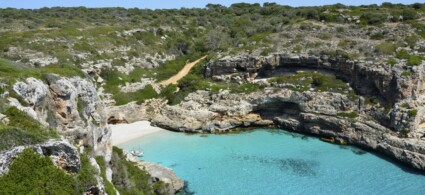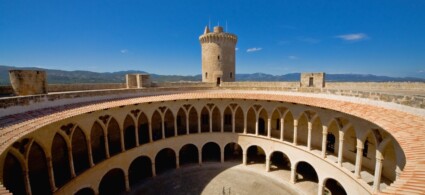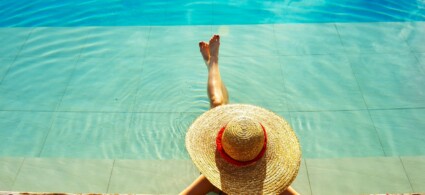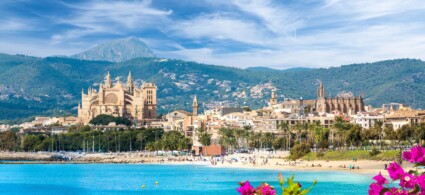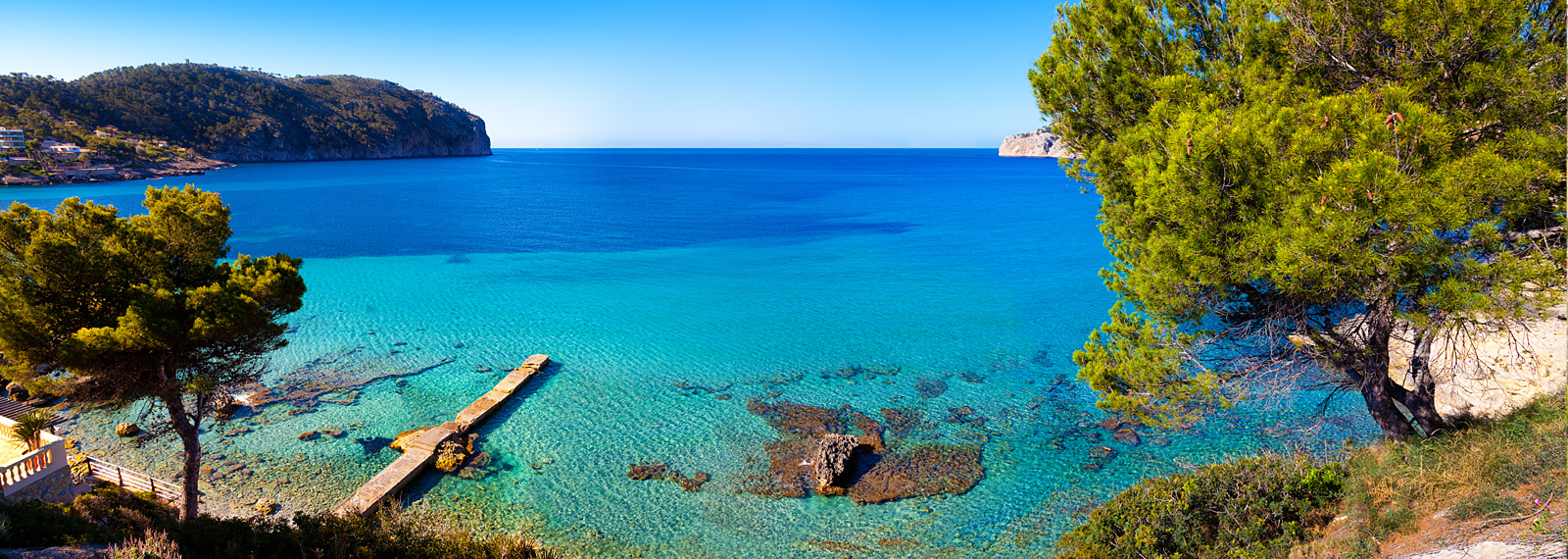

The beautiful Majorca is the largest island of the Spanish Balearic archipelago. A paradise two hours from home, where every type of traveller can find the holiday of their dreams: from teenagers looking for fun to couples on a romantic getaway, from families with children to travellers on the road, Mallorca is truly a perfect island for everyone.
With plenty of coves and sandy beaches with crystal-clear sea in magnificent colours, from the most secluded to the busiest with all possible and imaginable services, Majorca is the perfect island for lovers of the sea life. But it is also a destination for those who like to visit cities full of things to see, wild hinterlands and even mountain enthusiasts.
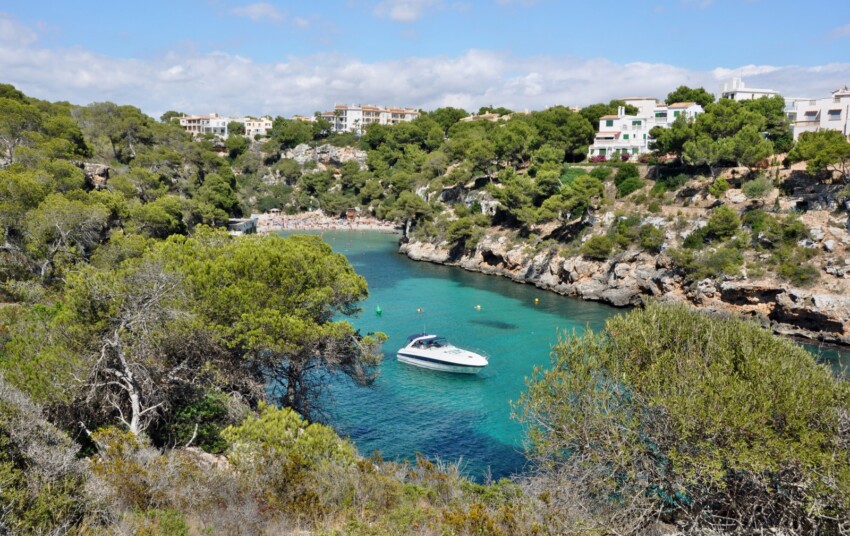
Of course, Majorca is at its best in summer, being a mainly seaside destination. If you can, avoid August, the busiest month of the year, and opt for June, July or why not September, when the sea temperatures are the hottest ever and the days are still very long.
The season in Majorca starts around April-May anyway. In these months you will find very few people, you will experience the island at its best without too many tourists, and on a nice day you can even venture out for a swim. However, in this season many hotels, shops, bars and restaurants will be closed.
In winter, Majorca has a charm all of its own, and the pleasant temperatures, more temperate than in the rest of Europe, certainly entice an out-of-season visit. You cannot, of course, take advantage of its beaches, but you can experience the island like a local; remember that Palma is a city of 400 000 inhabitants, about the size of Florence or Bologna, so it is alive and inhabited 365 days a year.
Before you leave, take a look at the Majorca weather forecast.
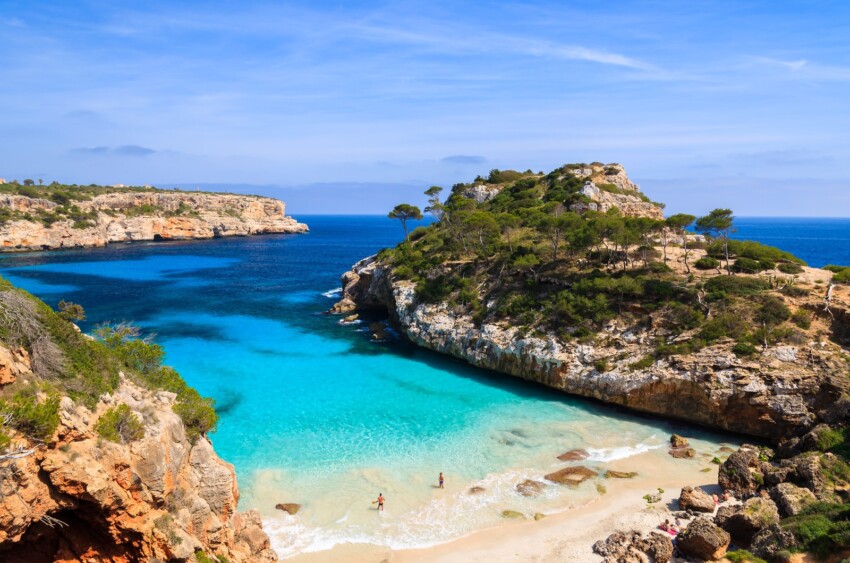
The main island of the Balearic archipelago, Majorca boasts a rugged coastline that is home to numerous beaches, bays and coves. There are over three hundred beaches on the island, some of which are remote and wild corners of paradise that can only be reached by foot.
In terms of beaches, the island has a wide range to offer: from the large beaches of S’Arenal and Magaluf, ideal for those seeking comfort and services, to small, remote coves such as Cala Marmols and Playa Formentor. You can choose to always go to the same beach or explore a different cove every day. It won’t be difficult in Majorca to find a corner where you can lay out your towel under the sun.
There is one thing, however, that all the island’s beaches have in common: they are bathed by a crystal-clear sea that varies from turquoise to deep blue. Some of its waters are ideal for snorkelling and diving, while other areas are perfect for windsurfing.
To plan your Majorca tour, discover the most beautiful beaches in Majorca in the dedicated section.
To admire Majorca’s beaches from the sea and reach them quickly and comfortably, take a boat tour. This is a must-do activity during an affordable stay in Majorca.
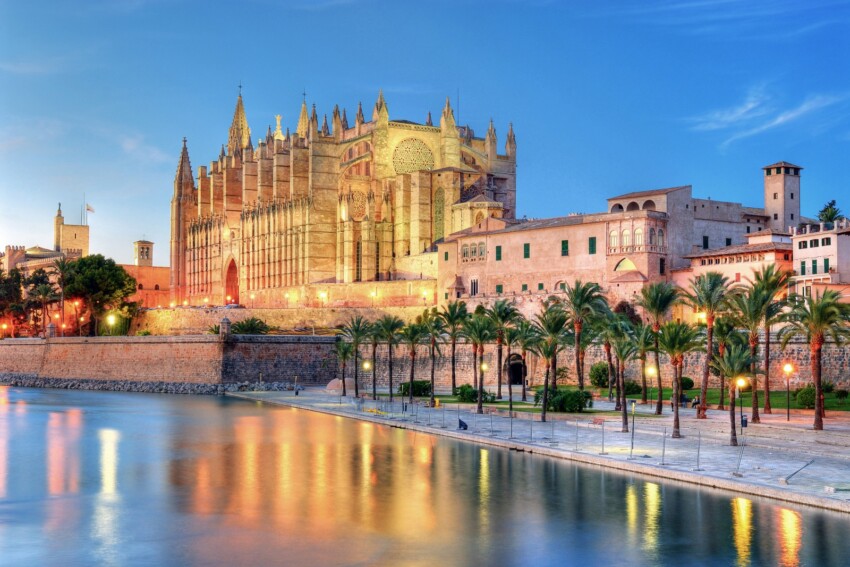
Majorca is not only about beaches and relaxation, the island also boasts a beautiful historical and architectural heritage. Therefore, during a stay on the island you can alternate days at the beach with visits to interesting sites and ancient cities. Among the stops you cannot miss on the island is its capital, Palma de Mallorca. This city is home to the beautiful Santa Maria Cathedral, also known as La Seu, and the Almudaina Palace, which is the residence of the Spanish royal family in Majorca. Other charming towns such as Alcudia and Soller are also worth a visit.
For a breathtaking sunset, head to the cape of Formentor, home to the lighthouse of the same name. This is geographically the most northerly point of the entire Majorca. Nature lovers should not miss a visit to the Sierra de Tramontana, Majorca’s mountain range with 54 peaks over 1,000 metres high. Declared a UNESCO World Heritage Site, this area is home to numerous itineraries and paths that can be travelled on foot, by bike or on horseback.
Due to the amount of tourists that visit these attractions, especially during the high season, we recommend booking tickets for the main attractions online well in advance.
You can only say that you have really explored Majorca once you have tried its excellent cuisine. Trying a place’s typical dishes and learning about its traditions is one of the best ways to fully experience a trip. Contrary to what many people think Majorca is not only famous for sangria and paella, but its cuisine is the result of its long history. Fish is certainly a popular dish, especially in the towns along the coast, but meat is also widely present, especially inland. Walking around the towns of Majorca you will find many Tapas Bars, which are traditional establishments imported from the cuisine of Andalusia. Tapas are ‘small portions’, i.e. a taste of a main dish with which to tease a little, and are often accompanied by a glass of beer or wine. In addition to tapas, don’t miss the bocadillos, which are bread croutons that can be topped with tuna, cheese or various sausages.
The island boasts many tapas bars and cellers, i.e. old cellars converted into places that serve tapas and bocadillos for lunch and dinner. In these it is often possible to taste various typical dishes such as: ‘Pa amb oli’ Majorcan pan moreno topped with various ingredients such as cured meats, cheeses and vegetables, ‘la sobrasada‘ which is a soft sausage or ‘le Caracoles a la mallorquina’ which are snails seasoned with local herbs.
Also worth trying is the Majorcan fried food, which contrary to what many people think is generally made up of fried offal served with potatoes or vegetables (always fried). Vegetarians can enjoy the excellent Tumbet, a vegetable dish topped with plenty of tomato sauce. Other traditional dishes include Majorcan soup (made with vegetables and bread), stuffed squid, cod with tomato, rice with meat, roast suckling pig and pickled fish.
For breakfast you can enjoy an excellent Ensaimada, which is a kind of soft, spiral-shaped brioche that can be filled with jam, cream or hollow. There is also a special variant with pumpkin jam filling that is known as ‘l’Ensaimada con cabell d’àngel’.
Majorca is an island of almost 1 million inhabitants, covering over 3500 square kilometres, so choosing where to stay is vital. It all depends, of course, on the type of holiday you intend to take and the type of accommodation you are looking for.
For those looking to visit more or less the whole island, it might be a good idea to stay in the interior, so that all four coasts of the island are within reasonable distance. You might consider sleeping in one of the towns along the Ma-13 and Ma-15 roads, such as Inca, Binissalem, Vilafranca de Bonany or Manacor.
Alternatively, you could choose to sleep in the Palma area to have a dynamic and culturally active city, a long beach and proximity to the international airport at your fingertips.
Choose Magaluf if your idea of a holiday is wild fun and partying until dawn, while you should choose one of the towns on the east coast if you are looking for less touristy locations (but don’t expect to find yourself alone, especially in August!) and beautiful coves.
Finally, if you want to explore the Sierra de Tramontana, and consequently the north-west coast of Majorca, choose a village between Valldemossa, Soller, Lluc or Pollenca. Accommodation in this area is also on average cheaper than in the rest of the island.
Majorca can be easily reached by plane or boat. Those arriving from other countries will certainly find the plane more convenient, while those who are already in Spain will be able to assess the most convenient means of transport on the basis of parameters such as price, timetable or amount of luggage to be carried.
The island of Majorca has an international airport located a few kilometres south of the city of Palma. It is the third busiest airport in Spain, with almost 30 million passengers a year, so much so that on peak summer days it handles around 1000 movements a day, as many as London Heathrow, which is the busiest airport in Europe.
Majorca Airport connects the island with many European cities, thanks to numerous scheduled, low-cost and charter airlines. Finding a flight to Majorca, especially in summer, is certainly not an arduous undertaking; finding a cheap one is a bit more difficult, but by continuously monitoring the route of interest and booking well in advance, one is able to get great rates.
There are around 80 ferries connecting Majorca with other destinations every week, most of them located on Spain’s Mediterranean coast. The companies that operate the routes are:
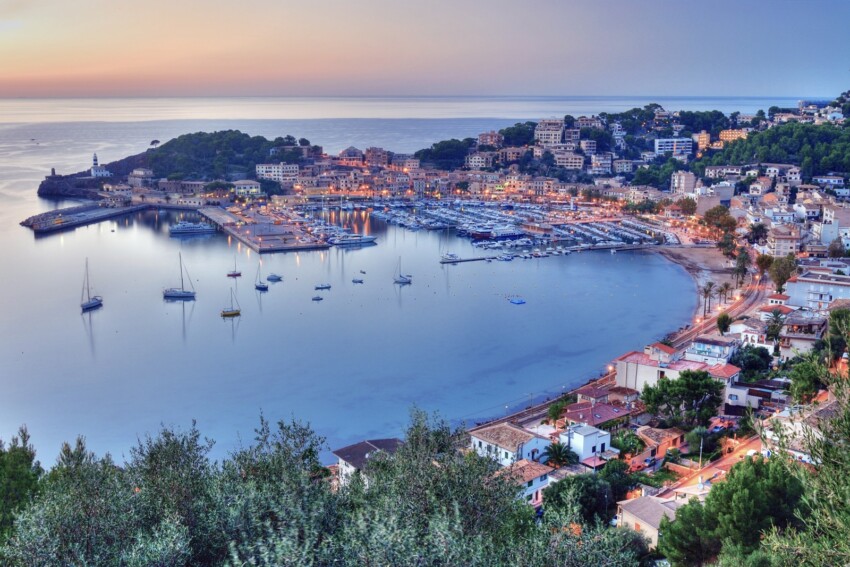
Travelling Majorca from east to west takes about an hour and a half, a distance of more than 100 kilometres. This is why it is advisable to rent a car and take advantage of the freedom that an own car provides, so that you do not have to rely on public transport to reach all the beaches and coves.
As far as the road system is concerned, Majorca has a motorway (Ma-1, or autopista de Poniente) that connects Palma to Puerto de Andrach, passing through Cas Catala, Illetas, Portals Nous, Palmanova, Santa Ponsa, Peguera, Calviá, Camp de Mar, Andrach y el Puerto de Andratx. In addition, the other two highways on the island are the Ma-13 and Ma-15 motorways, which lead from Palma to the east coast.
If you decide to travel by public transport, you can use the buses that run more or less all over the island, or the train, which has three lines: from Palma to Port de Soller, from Palma to Sa Pobla and from Inca to Manacor. Finally, in Palma there is the metro, built between 2005 and 2007 and consisting of 2 lines.
Majorca is located in the Balearic Islands archipelago; it is the largest island and also the 'central' one, as it is situated west of Menorca and east of Ibiza and Formentera. It is located in the Mediterranean Sea, south of Barcelona, from which it is four to eight hours away by ship.
